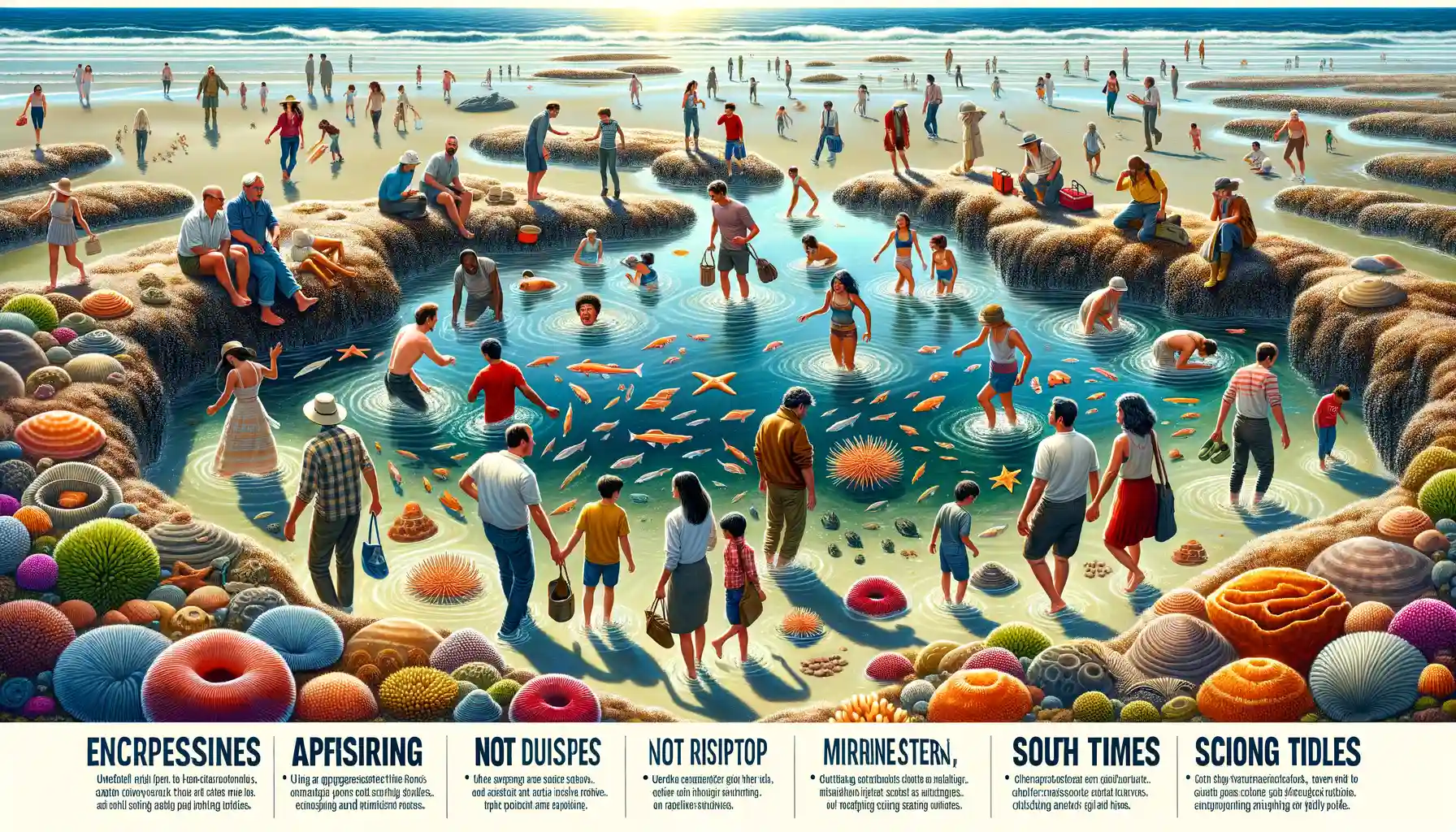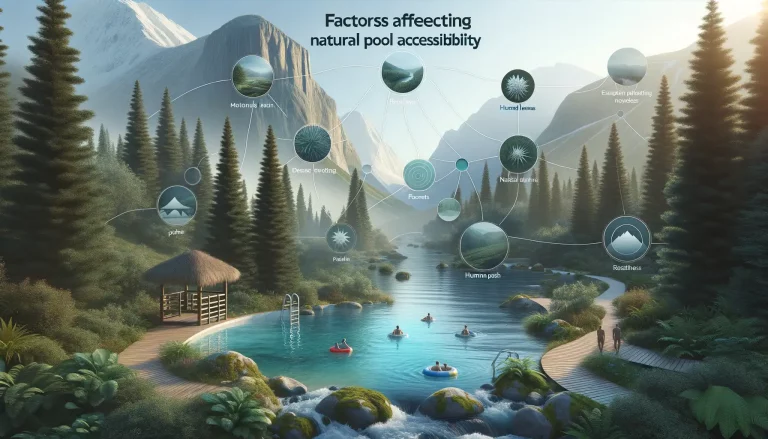Understanding Tidal Charts and Their Importance
Why Tidal Charts Are Your Secret Weapon
Picture this: you’re planning a visit to that dreamy natural pool you saw on Instagram. Crystal-clear water, vibrant marine life, and the perfect backdrop for your next adventure. But here’s the catch—your visit could either be magical or a total letdown, depending entirely on the tides. That’s where tidal charts take center stage. They’re not just data tables; they’re the backstage pass to incredible experiences in nature.
Tidal charts are like a script for the ocean’s rhythm. They reveal when the sea retreats to uncover hidden treasures or when it sweeps back, masking pathways with roaring waves. For natural pools, this can make or break your trip. Arrive too early, and your spot might still be submerged. Come too late, and it might be completely inaccessible—or worse, dangerous.
Treat tidal charts like your GPS for coastal exploration. Once you master them, nature’s clocks are yours to read!
Factors Affecting Natural Pool Accessibility

Changing Tides: Nature’s Clock at Work
Have you ever noticed how the ocean almost seems to breathe, rising and falling like a living, radiant being? This rhythmic dance of tidal movement plays a vital role in shaping the accessibility of natural pools. When the water retreats during low tide, it unveils crystal-clear pockets of calm tucked between rocky formations. But during high tide, these serene havens can vanish beneath swirling waves, as if swallowed by the sea itself.
Timing, then, becomes everything. Too early or late, and your visit can become more about waiting than wading. Understanding this tidal rhythm can transform your experience — it’s like catching the perfect beat in your favorite song.
Other Key Factors Influencing Access
It’s not just the tides pulling the strings! A variety of seasonal and environmental factors can decide whether your natural pool awaits you like an open invitation or hides behind nature’s barriers:
- Weather conditions: Strong winds or storms can cause turbulent waters, even during low tide.
- Time of year: Coastal erosion or sediment buildup shifts the rock formations seasonally.
- Moon phases: Spring tides during full and new moons lead to more extreme tidal ranges.
Think of these variables as nature’s way of adding a little mystery to your adventure. It’s not just about knowing when to go — it’s about being ready for surprises along the way!
How to Read Tidal Charts Effectively

Dive Into the Rhythm of Tides
Reading tidal charts might feel like deciphering an ancient treasure map, but once you crack the code, you’ll unlock the secrets of nature’s ebb and flow. At its core, a tidal chart is your personal guide to knowing when the ocean reveals its glittering treasures—like serene natural pools. Imagine it as a symphony where time, moon phases, and water levels all play in perfect harmony.
The key? Look for the low tide times. These are the magical windows when hidden pools emerge, giving you a front-row seat to marine life. On a typical chart, you’ll see columns of times paired with “high” or “low” tide labels. Focus on the lowest numbers—this is when water retreats like a drawn curtain, revealing nature’s beauty.
Quick Tips to Unlock Tidal Chart Magic
- Match the timing: Align your visit with the lowest tide—typically an hour before and after gives you the best view.
- Check the height: Tides measured under 1 meter (or your local metric equivalent) usually mean great conditions for exploring pools.
Understanding this rhythm isn’t just practical—it’s a way to dance with nature’s clockwork!
Best Practices for Planning Your Natural Pool Visit

Timing Your Visit Like a Local Tides Whisperer
Picture this: the sun is rising, painting the sky in hues of sherbet orange, and you’re standing on the edge of a crystalline natural pool. Sounds perfect? It all starts with nailing the timing. The secret sauce? Tidal charts. Aim to visit during low tide, when the ocean has temporarily pulled back its watery curtain to unveil these magical pools.
But not all low tides are created equal! Keep an eye on the spring tides (when the moon is playing tug-of-war with the earth) for the lowest water levels. To make things even more flawless, plan your arrival about 30 minutes before the tide bottoms out. This gives you time to settle in before the pools truly reveal their treasures.
Essentials for a Stress-Free Pool Day
You wouldn’t head to a picnic without snacks, right? The same applies to your natural pool escapade. Here’s your checklist for an unforgettable adventure:
- Footwear: Sturdy water shoes save your soles from sharp rocks or slippery surfaces.
- Sunscreen: Those tide pools may hide in the shade of cliffs, but the sun sneaks in everywhere!
- Tidal Chart: Keep a printed one or a reliable app handy—nature is unpredictable.
- Snacks & Water: Exploring works up an appetite, and dehydration can sneak up fast.
Savor every salty breeze and glimmering tide as you wander, knowing you came prepared for whatever nature throws your way.
Safety Tips and Precautions When Exploring Tidal Pools

Watch Your Step and Stay Aware
Walking along tidal pools is like stepping into a nature-made treasure chest, but it’s not without its risks. The rocks can be slippery—imagine ice skates on a wet gym floor! Be sure to wear sturdy, non-slip shoes to keep your footing secure as you navigate this magical terrain.
While exploring, keep an eye on the tide itself—it’s a silent player that can quickly turn the scene from tranquil to treacherous. A rising tide is swift and unrelenting, so always stay aware of your surroundings. Check for safe exit routes before venturing too far. Better safe than stuck, right?
Respect Marine Life as You Explore
Each tidal pool is brimming with tiny miracles: darting fish, spiny sea urchins, vibrant sea stars. While your curiosity may tempt you to touch everything, remember, these creatures are living their best lives—be kind!
- Don’t pick up animals unless absolutely necessary, and always place them back gently where you found them.
- Avoid stepping on barnacles or delicate plants—they’re more fragile than they look.
By treading lightly and observing mindfully, you’ll leave every tidal pool just as enchanting as you found it.





